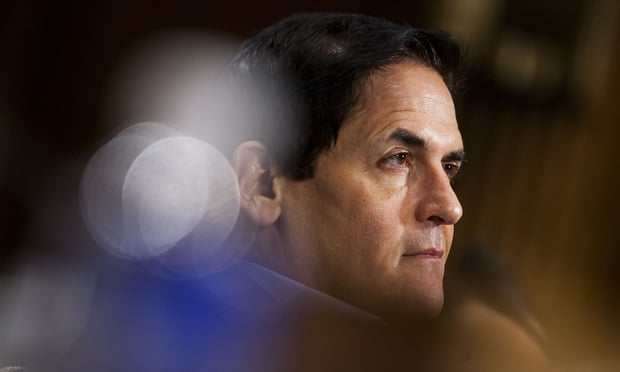A new study about wellness just published by Aon Hewitt shows that employees are keenly interested in financial wellness. More employers are concerned about whether their workers are saving enough, and not just for retirement. The report indicates that more than 90 percent of 250 large employers said they want to introduce or expand their financial wellness programs in 2015.
Employers are concerned about their workers reducing financial stress and improving productivity. There's no question that money problems stress people out. Nearly 25 percent of employees say their finances have been a distraction at work, according to accounting firm PwC's 2014 study of financial wellness programs. And Americans have named money as their top source of stress every year since 2007, when the American Psychological Association started reported findings in its survey called "Stress in America."
Recommended For You
Corroborating this theme, corporate financial wellness vendor, Four Seasons Financial Education (FSFE), recently released the findings of their 2015 Financial Wellness Survey covering various topics for 572 employees across the US. Among those findings, 74 percent of employees believe financial wellness should be made part of an employer's overall wellness program, up from 71 percent in 2014. The survey also found that 56 percent of employees have a wellness program available to them, but 40 percent of those wellness programs do not include financial wellness.
In addition to explaining how to get the most from employee benefits, financial wellness programs focus on helping employees track where their money goes, build emergency funds and cope with financial pressures. According to a recent Consumer Financial Protection Bureau (CFPB) report, financial wellness programs can reduce absenteeism, as well as disability and workers' compensation costs. That's because poor financial management causes stress, which sets the stage for medical problems, per the CFPB. Additionally, good financial wellness programs reduce borrowing from retirement savings and help participants achieve stability.
You may have questions about financial wellness: What is a financial wellness program? How does it work? And should you take advantage of such plans if offered one in your workplace?
According to California based Liz Davidson, the CEO and founder of Financial Finesse, financial wellness, from an employees' perspective, is a state of financial well-being, where they have the following:
-
Minimal financial stress;
-
A strong financial foundation (little or no debt, an emergency savings fund and are living below their means);
-
A plan they are following that puts them on track to meet future financial goals.
Financial wellness can even trickle down to actually wellness. Financial Finesse found that health-care costs for employees who participated in its financial wellness program dropped by 4.5 percent for one client during a two-year period. Financial wellness also looks at how the strategies increase participation in employer-sponsored retirement plans, flexible spending accounts and health savings accounts, and reduce borrowing from retirement accounts like 401(k)s and IRAs.
The Department of Labor places the fiduciary obligation on employers to provide their employees with an unbiased financial education. Great companies have long understood the value of providing a financial literacy education to their workers. When workers are in a state of financial wellness, they are in control. They are confident, focused and have a greater balance of finances and security. By offering employee financial education, an employer is making an investment in their business.
According to the National Institute of Personal Finance Employee Education, consider the following facts:
-
90 percent of the nearly 128 million workers in the US have difficulty managing their money and are not consistently saving for retirement.
-
Up to 50 percent admit to wasting 21 hours per month while on the job dealing with personal money matters.
-
Two–thirds say they "have trouble paying their bills on time and worry about money."
-
Employees regard financial stress as their No. 1 concern, 5 times greater than personal health.
Financial Finesse recommends to employers that programs must meet the following criteria to qualify as a true financial wellness program:
-
Delivered by an unbiased financial education company that is focused on changing employees' financial habits and behaviors, and helping them make informed financial decisions and create strong financial plans. Pairing this with an advice component can make for a comprehensive program, but solely having financial representatives sell employees insurance, mutual funds, or manage their assets is not a financial wellness benefit.
-
Holistic and comprehensive, meaning that it covers all aspects of financial planning, from serious debt issues to advanced estate planning and wealth protection, so the program can help all employees in a workforce, not just those who fall into a certain demographic. Also, the program should integrate all employer benefits and providers so it is a seamless program from an employee perspective.
-
Personalized and employee focused so that the programs start with the employees' financial issues and provide guidance around their specific needs, rather than attempting to simply educate them on financial terms or specific financial services. Personalized financial wellness programs are tremendously successful at driving behavioral change because they provide direct guidance tailored to the person's individual needs, as opposed to a "one-size-fits-all approach."
-
Financial wellness is a process, not an event. Employers would never expect employees to work out once or eat their vegetables for a week and immediately improve their health. Same thing with finances. Financial wellness programs, by nature, provide multiple channels and ongoing access to financial coaching so that employees have the support and accountability they need to not only make one-time changes, but ultimately develop financial habits and behaviors that become part of their lifestyles.
Given the large costs that may be associated with financial stress in terms of productivity loss and higher health care spending, employers have a potentially large incentive to explore cost-effective ways to enhance employee financial wellness. Employees would clearly benefit from any programs that reduced stress that may be linked to poor health.
Bob Harris, director of financial wellness at Waddell & Reed, a Kansas City, Kansas-based asset management and financial planning firm has said about financial wellness: "It's something that most employers are considering as an important part of their overall wellness program." Harris also says, "It doesn't matter how much money you have. What does matter the most is the decisions you make with that money."
Employers have widely accepted health and wellness programs, which benefit employees and employers alike, according to Prudential. Like health and wellness programs, needs-driven financial wellness programs promise to benefit employers as well as employees. The opportunity is great. Employers have a real opportunity to help improve their employees' financial health through targeted, needs-based financial wellness programs, which educate employees about the financial risks they face and provide the tools they need to help manage them.
Offering a broad array of insurance programs to employees can be an important component of that effort. Life, disability, critical illness, accident and other insurance programs, paired with medical insurance, can address many of the financial risks employees face every day. Needs-based financial wellness programs can improve on conventional approaches to promoting employee welfare. And, you should have counseling available by financial experts to explain how these products work in conjunction with other financial needs. Don't just sell insurance.
However, at the end of the work day, the vital characteristic most notably missing but definitely needed is engagement. Employers need to engage with their workers to know what areas of financial wellness are the most critical to them, and thereby engage a financial wellness vendor with expertise in this type of benefit to design a program that is not cookie cutter, but addresses individual needs.
Employees need to engage in participation — discussion of financial needs with HR, participation in "town hall" benefits discussions, and active use of the various financial wellness tools made available to them. Changing attitudes and behaviors on all fronts requires engagement in the overall process by all stakeholders. Otherwise, companies and their workers may continue to be both physically and financially sick. You, too, with the right tools and training can cash in on financial wellness.
© 2025 ALM Global, LLC, All Rights Reserved. Request academic re-use from www.copyright.com. All other uses, submit a request to [email protected]. For more information visit Asset & Logo Licensing.







